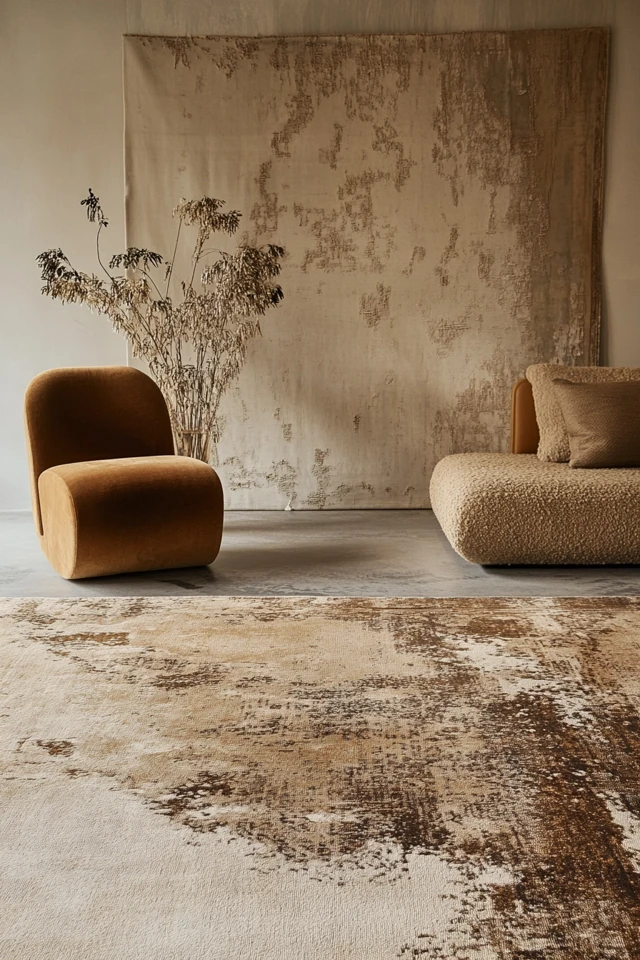Introduction
Rugs are more than just floor coverings—they’re design tools that can define spaces, add warmth, and elevate the overall aesthetic of your home. I remember the first time I realized the true power of a rug. My living room felt disjointed despite having great furniture, and it wasn’t until I introduced a bold geometric rug that everything clicked. Suddenly, the space felt cohesive, inviting, and elevated.
Using rugs effectively is both an art and a science. From choosing the right size to pairing the perfect texture and pattern, rugs have the power to anchor a room, create zones in open layouts, and inject personality into your decor. In this guide, I’ll share everything you need to know to use rugs to define and elevate your space beautifully.
Why Rugs Are Essential in Interior Design
Key Benefits
- Anchor Spaces: Rugs ground furniture arrangements, creating a sense of unity.
- Define Zones: In open-concept layouts, rugs help establish distinct areas.
- Add Warmth: They make hard floors feel cozy and inviting.
- Elevate Style: Rugs add color, texture, and pattern, acting as a design focal point.
1. Choose the Right Size for Each Room
Why It Works
A correctly sized rug ensures your space feels balanced and intentional, rather than cramped or incomplete.
How to Do It
- Living Room: The rug should be large enough to fit at least the front legs of all furniture. Ideally, the rug extends under the sofa and chairs.
- Dining Room: Choose a rug that’s at least 24 inches larger than the table on all sides to accommodate chairs when pulled out.
- Bedroom: Place a rug under the bottom two-thirds of the bed, extending out on each side. Alternatively, use runners on either side of the bed.
- Entryway: Use a small rug or runner that fits within the space without crowding the door swing.
2. Use Rugs to Define Zones
Why It Works
Rugs create visual boundaries, making open-concept layouts feel more organized and cohesive.
How to Do It
- Use one rug to anchor the living area and another for the dining area to distinguish the two spaces.
- In larger bedrooms, place a rug under a seating area to define a cozy nook.
- In home offices, use a rug under the desk and chair to create a defined workspace.
- Avoid overlapping rugs—each rug should have its own purpose and zone.
3. Layer Rugs for Depth and Texture
Why It Works
Layering rugs adds dimension and visual interest, creating a curated, designer look.
How to Do It
- Start with a neutral base rug (like jute or sisal) and layer a smaller patterned or colorful rug on top.
- Use a sheepskin or faux fur rug as a cozy layer over a larger rug or even on a chair.
- Combine rugs with different textures, such as a woven rug under a plush one, to add contrast.
- Stick to a cohesive color palette to keep the layered look balanced.
4. Introduce Pattern and Color
Why It Works
Rugs with bold patterns or colors act as statement pieces, elevating the style of the room.
How to Do It
- Use a geometric rug to add a modern touch to minimalist spaces.
- Incorporate traditional Persian or Moroccan rugs for timeless elegance.
- Choose a rug with soft pastels or muted tones to maintain a calm, Scandinavian vibe.
- Pair a bold rug with neutral furniture to let the rug take center stage.
5. Play With Texture
Why It Works
Texture adds depth and interest to a space, making it feel more dynamic and inviting.
How to Do It
- Use a high-pile rug in living rooms or bedrooms for a plush, cozy feel.
- Opt for a flatweave rug in high-traffic areas like dining rooms or entryways for durability.
- Incorporate a shag rug in smaller spaces like a reading nook to create a touchable, luxurious vibe.
- Mix textures by pairing soft, plush rugs with sleek, hard furniture.
6. Align Rugs With Furniture Placement
Why It Works
Proper alignment ensures that the rug and furniture work together to create a cohesive, balanced layout.
How to Do It
- Center the rug under the coffee table, ensuring it extends under all seating for a unified living room look.
- Align the rug with the bed’s frame, allowing equal overhang on each side for symmetry.
- In dining areas, center the rug under the table and ensure all chairs fit comfortably within its borders.
- Avoid placing rugs that are too small for the furniture—it can make the space feel disconnected.
7. Add Rugs to High-Traffic Areas
Why It Works
Rugs protect floors, reduce noise, and add style to frequently used spaces.
How to Do It
- Use durable rugs, such as flatweave or indoor-outdoor rugs, in hallways, entryways, and kitchens.
- Place a runner along long corridors to soften the space and add warmth.
- Opt for dark or patterned rugs in high-traffic areas to conceal stains or wear.
- Add non-slip pads to keep rugs secure and prevent accidents.
8. Use Rugs as Art Pieces
Why It Works
A striking rug can double as a work of art, adding visual impact to your space.
How to Do It
- Choose a rug with intricate patterns or bold graphics as the room’s centerpiece.
- Hang a unique rug on the wall as a tapestry for a dramatic statement.
- Pair art-inspired rugs with simple furniture to keep the focus on the rug.
- Coordinate the rug’s design with other decor elements, such as pillows or curtains.
9. Mix and Match Rugs in Open Spaces
Why It Works
Combining different rugs adds variety and personality while maintaining a cohesive aesthetic.
How to Do It
- Use rugs with similar color palettes but different patterns to create interest.
- Pair a large, neutral rug with a smaller, patterned one for balance.
- Avoid pairing rugs with clashing patterns or overly bright colors to keep the space harmonious.
- Maintain consistency by choosing rugs with complementary styles, like bohemian or modern.
10. Match the Rug’s Shape to the Room
Why It Works
The shape of the rug should complement the room’s layout and furniture arrangement.
How to Do It
- Use a rectangular rug in living rooms, dining rooms, and bedrooms for a classic look.
- Opt for a round rug under circular tables or in small spaces to soften the edges.
- Choose an oval rug to add elegance to entryways or narrow hallways.
- Match the rug’s proportions to the size of the room for balance.
Picture Gallery
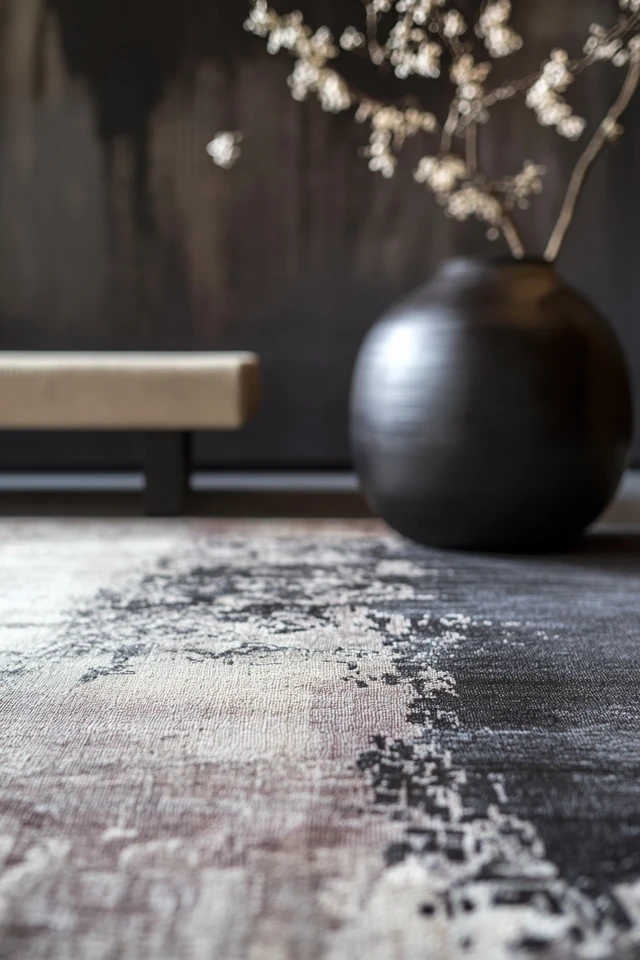
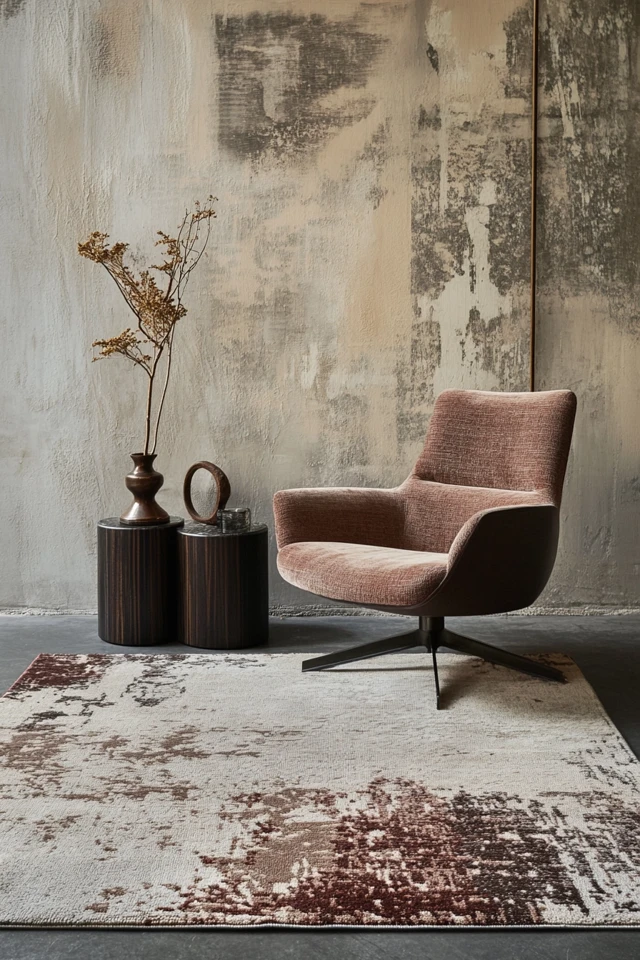
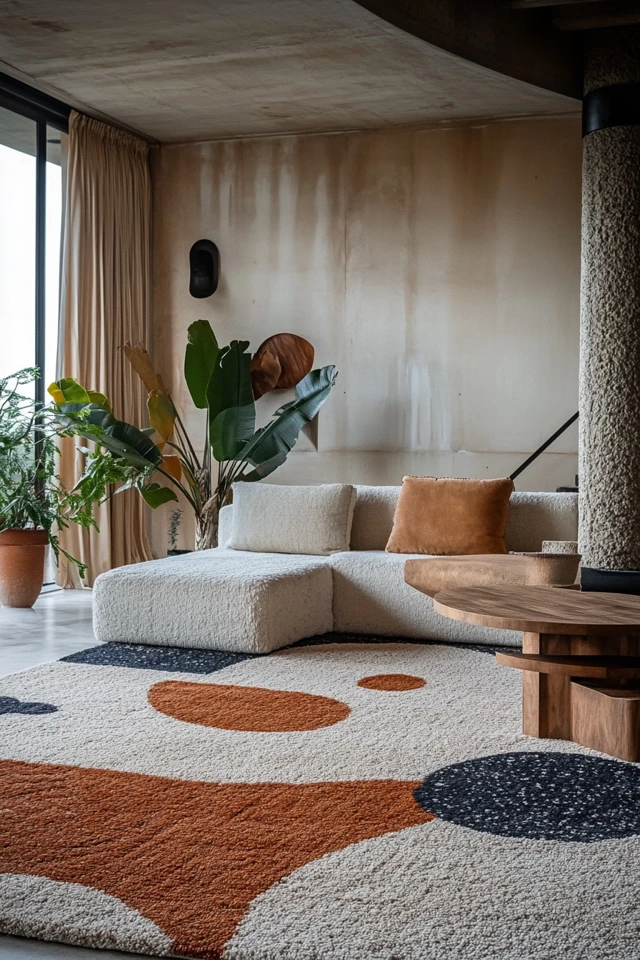
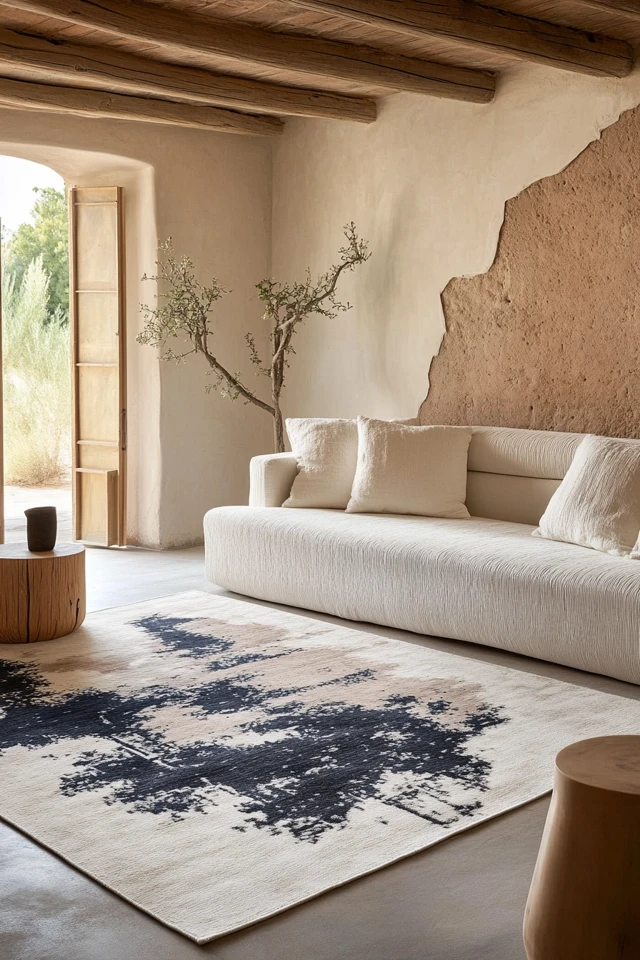
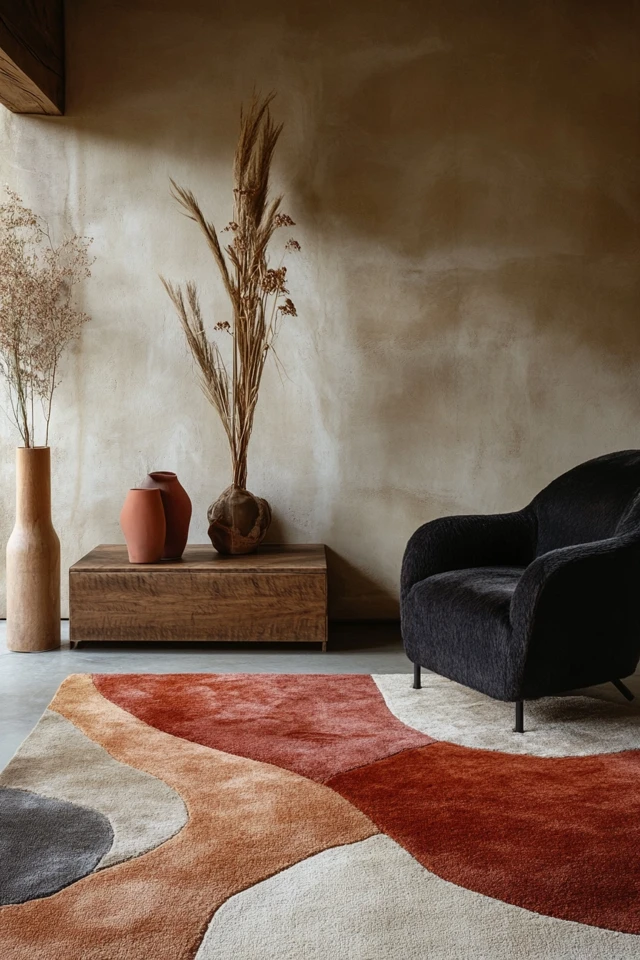
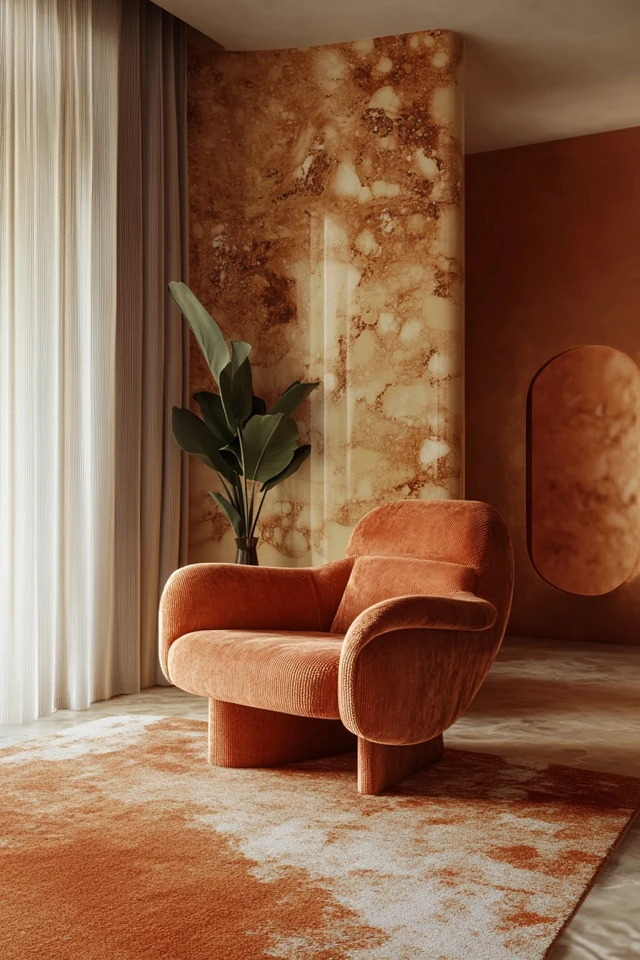
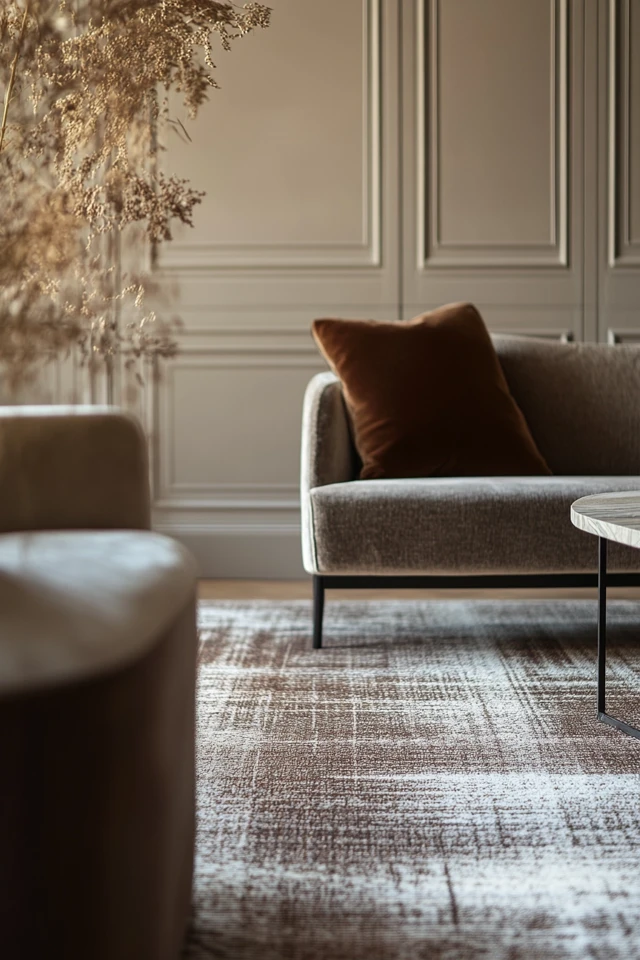
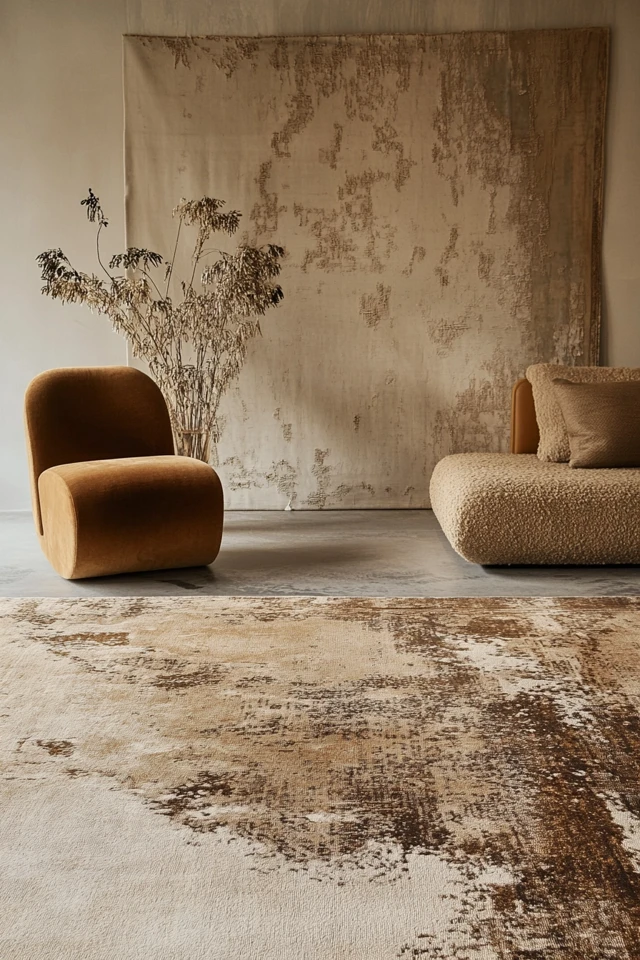
Conclusion
Rugs are one of the most versatile design elements, capable of transforming a space both functionally and aesthetically. By choosing the right size, texture, and pattern, you can define zones, elevate your decor, and create a cozy, welcoming environment.
What I love most about rugs is their ability to tie a room together effortlessly. Whether it’s a bold, patterned rug that makes a statement or a soft, neutral one that grounds the space, the right rug can bring harmony and warmth to any room.
So don’t overlook the power of rugs. Experiment, layer, and play with colors and textures until you find the perfect piece to define and elevate your space.
FAQ
How do I choose the right rug size?
The rug should fit the scale of the room and furniture. For example, ensure living room rugs extend under the front legs of seating, and dining room rugs are large enough for chairs to stay on the rug when pulled out.
What materials are best for different rooms?
Use high-pile or plush rugs in bedrooms and living rooms for comfort. Opt for flatweave or indoor-outdoor rugs in high-traffic areas like kitchens or hallways for durability.
Can I use multiple rugs in one room?
Yes! Mixing rugs adds interest, but ensure they complement each other in color, pattern, or style to maintain cohesion.
How do I keep rugs from slipping?
Use non-slip rug pads or tape to keep rugs securely in place, especially in high-traffic areas.
Where can I find stylish rugs?
Retailers like West Elm, Anthropologie, Wayfair, IKEA, and Ruggable offer a variety of rugs to suit different styles and budgets.

